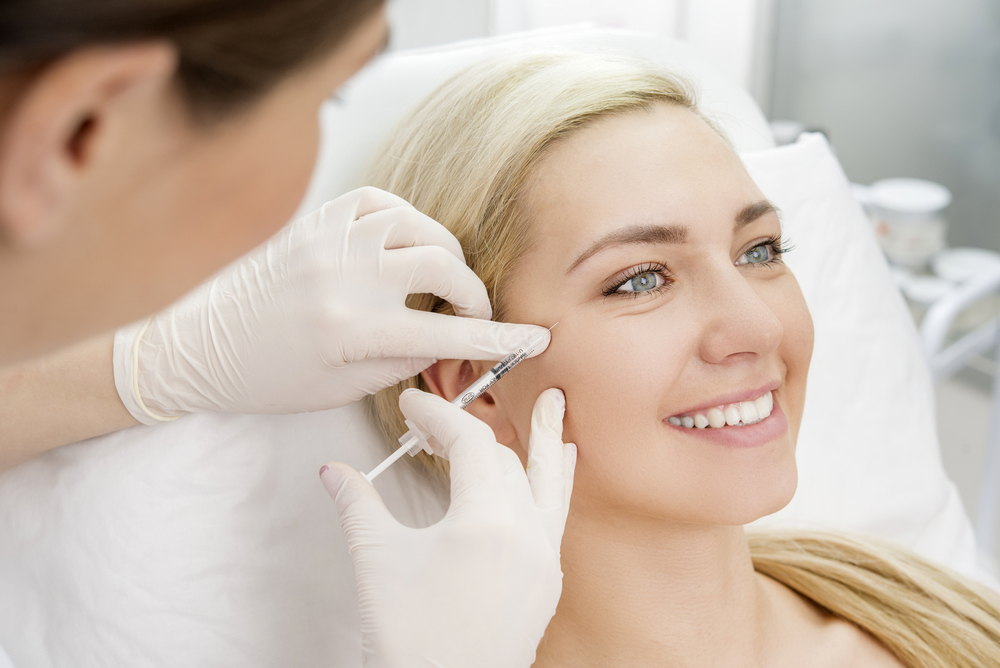Expert plastic surgeons discuss common turbinectomy techniques and answer frequently asked questions on recovery, side effects, and cost.
The nose is a complex structure whose primary purpose is to control and regulate airflow for proper breathing. The turbinates are one of the nose’s most important components. When they become unduly swollen, nasal obstruction may occur. And when this obstruction becomes a chronic problem, surgery may be required.
Turbinectomy is one such surgery. This procedure involves the partial or complete removal of a turbinate, usually the inferior turbinate (inferior turbinectomy). It is typically performed with the aid of a small, thin, illuminated optical instrument called an endoscope.
Other surgical techniques to reduce the size of the inferior turbinate include extramucosal or submucosal electrocautery, laser-assisted ablation or resection, radiofrequency ablation (RFA) and cryosurgery. The experts we spoke to for this article strongly recommended against these methods as they may be ineffective or cause severe aftereffects.

When Is Turbinectomy the Best Option?
The turbinates are an internal nasal structure primarily responsible for regulating nasal airflow. Located on the sidewalls of the inside of the nose, these structures — especially the inferior turbinates and particularly their mucosa, which humidify, filter and warm inspired air — are paramount to proper respiratory function.
Swelling of the mucosa is a normal part of the nasal cycle. However, factors such as allergens, airborne irritants, infection, and other factors can worsen this swelling. Unfortunately, nasal obstruction stemming from swollen inferior turbinates is not uncommon.
Otolaryngologists (ENTs) use a variety of different techniques to treat swollen turbinates and nasal obstruction. Knowing which part of the turbinate is inhibiting airflow helps the doctor determine which technique(s) should be used. When other treatments such as nasal steroids and allergic rhinitis are unsuccessful, turbinectomy surgery may be necessary.
Inferior turbinate reduction may be the best option for patients with nasal obstructive symptoms caused by enlarged turbinates. However, there is no uniform method of determining what treatment is needed. Instead, the doctor must conduct a physical exam and evaluate findings from a nasoendoscopy as well as the patient’s symptoms.
Some of the other factors ENTs look for and assess include the following:
- Swollen turbinates resulting from allergies, chronic sinusitis or chronic inflammation
- Nasal congestion stemming from swollen turbinates that have failed to respond to other treatment
- Degree of accessibility during sinus or nose surgery
- Swollen adenoids
- Deviated nasal septum
- Nasal polyps obstructing nasal airflow
- Other tumors obstructing nasal airflow
The Turbinectomy Procedure
The turbinectomy procedure may be performed in your ENT’s office, possibly as part of a combination procedure that also includes rhinoplasty or sinus surgery, or as part of an overarching treatment aimed at treating obstructive sleep apnea. It is also possible, in some cases, to perform turbinectomy and septoplasty together. (Septoplasty is surgery to correct a deviated septum, another common cause of nasal breathing problems.)
The surgery consists of removing either just bone or bone and soft tissue. Different techniques may be used, including electrocautery, cauterization or a microdebrider (a tiny, fast-moving medical device used to shave soft tissue). The surgeon will use computer tomography to get a clear view of the surgical site.
The method(s) and approach used always depends on the individual needs of the patient, but each surgeon has his or her own beliefs and approach to turbinate reduction. For example, Dr. Daniel Slaughter, a board certified otolaryngologist in Austin, TX, firmly believes that there is only one good way to reduce the turbinates: submucosal turbinate reduction using a suction microdebrider, which he says has been clearly shown in clinical studies to offer superior short- and long-term correction of turbinate enlargement and associated chronic congestion.
Other techniques, such as electrocautery, RFA, laser treatment and cryosurgery offer limited relief in the short term, he explains, as well as increased crusting, delayed healing, and a complete recurrence of congestion in less than a year.
Dr. Murray Grossan, MD, a board certified otolaryngologist in Los Angeles, CA, also believes that many of these techniques are problematic, if not potentially disastrous. “Many post turbinate surgery patients have had their lives ruined because air no longer goes to the sensors,” he says. In many cases, Grossan explains, postoperative tests show that a patient is getting enough oxygen yet the patient feels like they are not getting enough air. “Plus, they get frequent infections and there is often inflammation present,” he says. And he warns that cryosurgery is even worse than simple surgical removal.
Another awful condition that often afflicts patients who have undergone the wrong procedure is empty nose syndrome (ENS), a rare syndrome in which people who have clear nasal passages experience a sensation of being unable to breathe.
Grossan agrees with Slaughter that the best form of turbinectomy is through submucosal turbinate reduction, in part because it won’t lead to ENS. “You can reduce the size of the turbinate safely by doing a submucosal revision of the bone,” he says. “This spares the nasal cilia and avoids ENS. In my experience, I would not touch the membranes, only the bone. When you elevate the turbinate membrane off the bone and remove the bone so the turbinate lies more laterally, you get the best results.”
Many post turbinate surgery patients have had their lives ruined because air no longer goes to the sensors.
Dr. Murray Grossman
Dr. Evan Walgama, MD, also a board-certified otolaryngologist in Los Angeles, echoes Slaughter’s point that the use of a microdebrider for submucosal turbinate reduction seems to have produced the best clinical outcomes data, even compared directly with other techniques.
“Its effects may be the longest lasting and it may do the least damage to tissues,” says Dr. Walgama. But he also cautions that it depends on the surgeon. “Some surgeons may be better with other technologies,” he explains. “I do not use this technology exclusively as there are advantages to some of the other technologies that sometimes outweigh the small differences reported in clinical outcomes.”
Slaughter says that when the microdeblider is used, the surgery is usually combined with a procedure called balloon sinuplasty (to correct any sinus issues) and long-term allergy management (typically with allergy drop therapy) to enhance the result.
Slaughter also adds that there is always an underlying reason for turbinate swelling. “Simply reducing the turbinate without evaluating the root cause will not result in a long-term cure,” he explains. Chronic sinus infection, a deviated septum, and allergies, among other potential causes, need to be evaluated. “A comprehensive approach with office-based mini-CT scan, video nasal endoscopy, and a thorough history and exam by a board certified ENT doctor is critical as part of the treatment plan.”
Patients are advised to educate themselves on the various turbinate procedures as much as possible and ask their physicians as many questions as possible in order to come to a decision on the best approach in their particular case.
Turbinectomy Recovery and Side Effects
The most common complication associated with nasal surgery is bleeding. As for turbinectomy side effects specifically, as Slaughter explains, “there may be a small bloody nasal discharge for a few hours after the procedure. Some waxing and waning congestion for 3-5 days. Then the nose opens up beautifully with an excellent airway and clear breathing. Patients will work, play, and exercise the day after the procedure.”
In some cases the surgeon may choose to pack the nose for several days to prevent excessive bleeding. If you have nasal packing you will need to return to your surgeon’s office to remove the packing.
Alternatively, a coagulation agent called costasis may be sprayed onto the surgical area to help prevent bleeding. This may eliminate the need for nasal packing. Costasis can make the postoperative recovery process smoother. Another alternative that may reduce bleeding is laser treatment.
Following turbinectomy you will need to keep the nose moist. The nose should be irrigated every couple of hours during the waking hours. Once the nasal packs are removed your surgeon may have you use a saline spray several times daily to prevent the formation of crusts.
You will also need to rest and avoid hard chewing, strenuous activity and, though it may sound strange, smiling or talking too much.
Overall, most patients experience minimal discomfort and better breathing two to six weeks after their turbinectomy procedure.
Turbinectomy Surgery Cost
Turbinectomy is covered by most health insurance carriers, but of course it depends on the individual insurance plan. Some patients are only required to pay a co-pay while others are responsible for more of the total cost.
If you believe you will be having turbinectomy surgery you should check with your insurance carrier to be sure.









